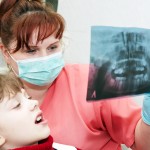
The parental relationship may have an important influence on the child in the dental setting and parental presence/ absence has been used as a method of establishing effective dentist-child communication during dental treatment. However, studies assessing the influence of parental presence/ absence have shown conflicting results.
The aim of this review was to evaluate whether parents’ presence in the room influences children’s behaviour, anxiety and fear during dental treatment.
Methods
Searches were conducted in the Cochrane Library, Medline/PubMed, Embase, LILACS, PsycINFO, Web of Science, Google Scholar, OpenGrey and ProQuest Dissertations and Theses Databases. Randomised controlled clinical trials (RCTs) non-randomized controlled trials (CCTs) or cohort studies of dental procedure in children (under 18 yrs. of age) in the presence or absence of parents’ involvement measurement of behaviour and or anxiety and fear were considered. Two reviewers independently screened and selected studies. Data was extracted and risk of bias assessed using the Joanna Briggs Institute Critical Appraisal Tool for Randomized Controlled Trails and Quasi-Experimental Studies. The primary outcome was children’s behaviour with fear and anxiety as secondary outcomes. GRADE (Grading of Recommendations, Assessment, Development and Evaluation) was used to assess the certainty of the evidence.
Results
- 16 studies were included with 5 studies contributing to the meta-analysis.
- 8 of the studies were RCTs, 2 CCTs and 6 before and after studies.
- All of the included studies were considered to be at high risk of bias.
- The meta-analyses showed
- No difference in children’s behaviour in the presence or absence of parents.
- The presence or absence of parents did not influence children’s anxiety or fear.
- The certainty of evidence was considered to be very low.
Conclusions
The authors concluded: –
…..parents’ presence in the operation room does not influence children’s (up to 12 years old) behaviour, anxiety and fear during dental treatment with very low certainty of evidence. Methodological limitations of included studies, however, suggest that better designed trials are needed to adequately understand this issue.
Comments
The authors have searched a broad range of resources to identify relevant studies for this review. 10 of the 16 included studies were trials with only 8 being randomised and all 16 of the included studies were considered to be at high risk of bias. While the available evidence suggests that there was no difference in children’s behaviour, anxiety or fear during dental treatment with the parents present or absent the certainty of the evidence was very low this means that new evidence could have a substantial impact on the findings. The authors also highlight a number of other issues including the use of convenience samples with no sample size calculations, type of treatment received, no assessment of child’s temperament, parental attachment or parenting style all of which influence behaviour and anxiety.
Links
Primary Paper
Passos De Luca M, Massignan C, Bolan M, Butini Oliveira L, Aydinoz S, Dick B, De Luca Canto G. Does the presence of parents in the dental operatory room influence children’s behaviour, anxiety and fear during their dental treatment? A systematic review. Int J Paediatr Dent. 2020 Dec 1. doi: 10.1111/ipd.12762. Epub ahead of print. PMID: 33258144.
Other references
Dental Elf – 7th Oct 2010
